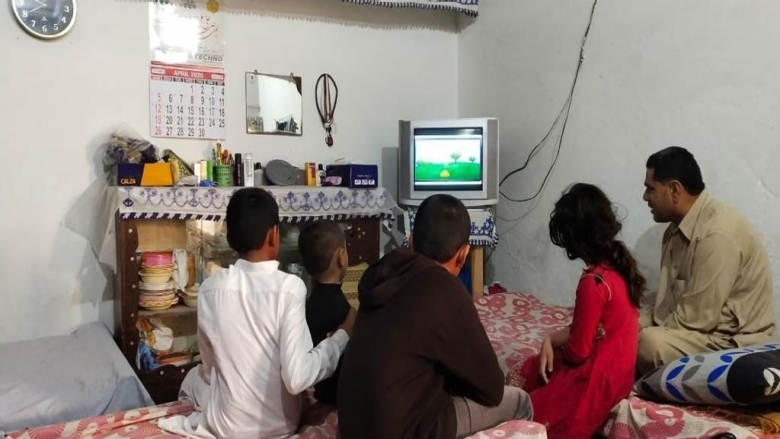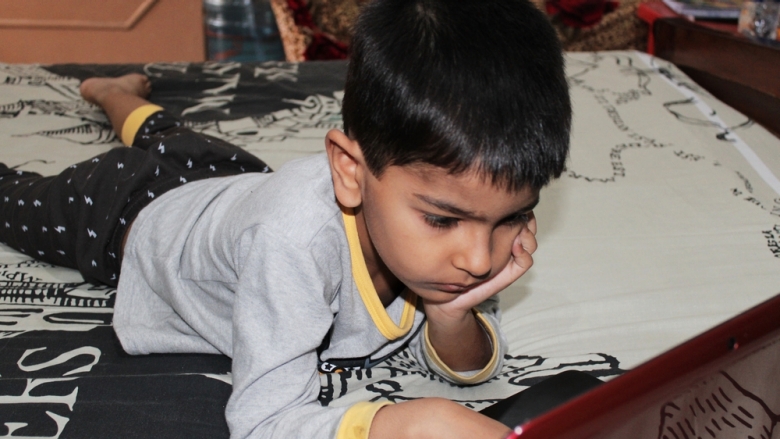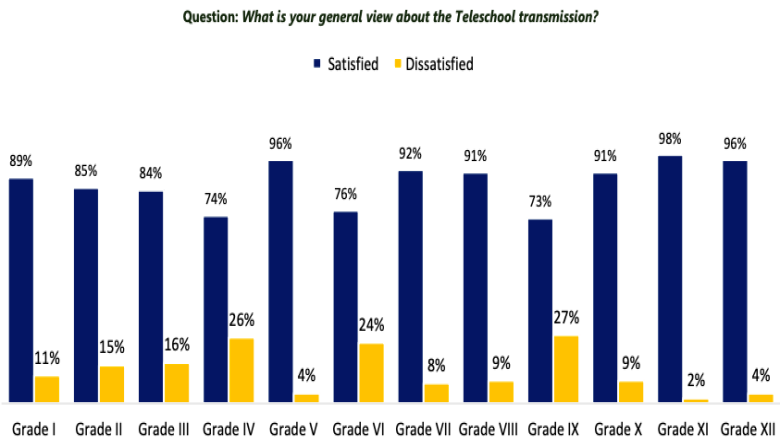Public awareness and support
Communication campaigns were deployed, such as teaser videos, announcements via local mosques, and social media and newspaper advertising, leveraging public figures such as the Prime Minister. Support was provided to beneficiaries before and during programing. Resources such as TV broadcast and rebroadcast schedules and links to lessons can be easily accessed by users in one place.
Challenges faced
Coordinating across multiple players has been challenging, since institutional planning involved almost ten different stakeholders within and outside the government. There has been limited student engagement, requiring continuous innovation especially for areas with historic low educational outcomes. Assessing impact on student learning has also been difficult given the limitations of education TV.
Short-term impact
Education TV has been supporting distance education during emergencies, buttressing learning during teacher shortages/absenteeism, and serving as a complementary support for teachers and schooling. A Gallup Pakistan Rapid Assessment was conducted in May 2020 to measure the short-term impact of TeleSchool regarding awareness, viewership, perceived quality, and loyalty. Within two months, 1,200 households with children ranging five to fifteen years of age in Pakistan were telephonically surveyed: nearly one in every three Pakistanis surveyed said they had accessed TeleSchool lessons (with the highest proportion from Punjab), with an estimated weekly viewership of six million children. Seventy-seven percent were either satisfied or somewhat satisfied with TeleSchool lessons, with rural respondents more satisfied than their urban counterparts. 66 percent of parents surveyed said they would recommend TeleSchool to other parents.
A Gallup Pakistan Rapid Assessment conducted to understand the short-term impact of TeleSchool found that, overall, families were satisfied with programing in the first two months of TeleSchool’s launch during COVID-19
Taleem Ghar has been tracking website usage, mobile app downloads, and the number of cable TV networks that broadcast the programing in Punjab. In the first six months of programing, the Taleem Ghar mobile app was downloaded more than 80,000 times, its TV lessons broadcasted across more than 95 percent of cable TV operators across Punjab, and its Taleem Ghar website accessed more than one million times.
However, by September 2020, IPSOS, a market research firm, found that awareness and use of TeleSchool and Taleem Ghar had decreased. This highlights the challenges faced by governments in keeping families and children engaged, and the need to continuously improve the emergency responses deployed.
Lessons learned from Pakistan’s emergency response and what next
Pakistan leveraged stakeholders, repurposed educational content, and recycled resources (such as TV production expertise, faculty, students, and equipment). MoFEPT leveraged private educational partners who offered their educational material for free, and worked with media regulatory authority and TV providers to broadcast content at subsidized or no cost. Punjab repurposed educational content created by SED for teacher training and adapted it for students.
A phased approach allowed the federal and provincial initiatives to launch programing for two weeks for specific subjects and grades —for example, Punjab started programing for grades one through eight only. Both initiatives then released more content in subsequent two-week phases, and gradually expanded to more grades and subjects. The federal and provincial governments plan to develop blended approaches to expand education to remote areas using TV, radio, and online programing, as well as to translate national and international educational resources to increase the availability of content in local languages.
Replicating and scaling up Pakistan’s model
Leveraging stakeholders and resources to ensure a swift remote learning response led Taleem Ghar and TeleSchool to have minimal needs for additional financial resources in the short term. This model is relatively easily scalable and replicable by other education ministries, especially in countries where household TV reach is significantly greater than access to connectivity and other devices or is used to supplement online learning (for example, China).
TV lessons are being used across developing countries to support an inadequate supply of qualified secondary school teachers in rural/marginalized areas as well as in areas with teacher absenteeism (for example, Mexico). "There were teachers who downloaded the Taleem Ghar YouTube channel, and made it more engaging on their own! They recorded their lessons, complimenting the lessons of Taleem Ghar. I would say this is very positive feedback because it shows innovation. It shows buy-in from locals,” stated Abdal Mufti, Head of Research and Policy Wing of the School Education Department of the Government of Punjab, who led Taleem Ghar.




